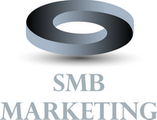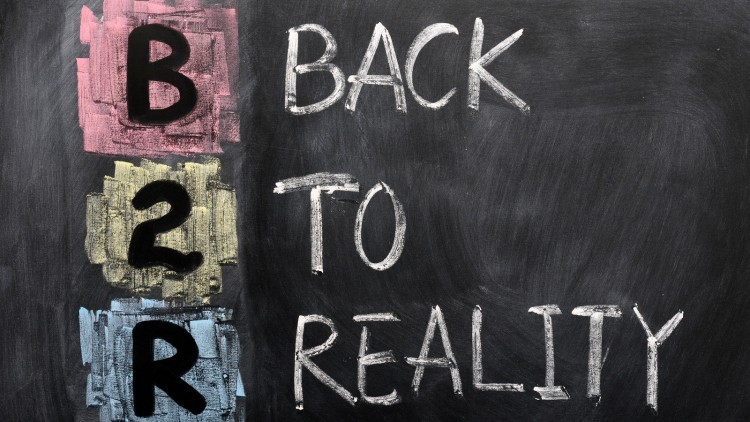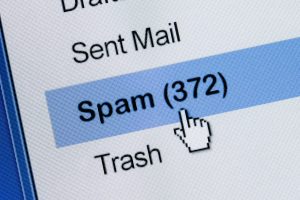Five Ways To Avoid Your Customers Spam Folder
If you’re like me, you get 100’s of emails a day and many end up in your “Junk E-mail” or for those really worthless e-mail senders, the “Deleted Items” folder. I noticed recently, after speaking to a client about using email campaigns for his marketing communications, that some email I receive is technically “junk email” but I open them anyway, either because it’s informative, creative or it’s related to something I’m interested in; hobby, work, etc. I started to pay more attention to the “junk email” I was reading and as importantly, the items I flagged for future deletion versus those I chose to remain in my inbox. I then did some research to see if how I evaluated what email I’d read versus delete was similar to others.
I wanted first to understand how viable email still was a marketing tool. I’ve been successfully using email marketing campaigns for the last 15 years but it was useful to know how the industry “experts” viewed it. I was pleased to find that studies such as the Adestra Consumer adoption and Usage Study show that over 85% of responders within the age range of 14-57 still use their smart phones for checking personal emails and 34% for business email. While social media has taken some of the attention away from email, the statistics show it’s still a strong channel for marketing purposes.
So how do we get our customers to read our marketing e-mails and avoid them ending up unread in the junk/spam folder?
1 Use Graphics and Animation
Text is old and boring, the last thing your customer wants to do is see a wall of text. A picture is worth a thousand words and a relevant moving picture such as a GIF or Cinemagraph (like a GIF but only the background moves) is woth even more in catching your viewers eye and getting them to read your message. There are a lot of GIF makers on the web but I’ve used imgflip (imgflip.com) for the last year and highly recommend them.
2 Don’t Forget to Assign Alt Text To Your GIF’s
Due to the threat of malware most email clients will not display images in received emails. All those great full page images you created to embed in your email probably were never seen. What the user likely saw was a blank screen (below), your signature and opt out text, none of which would be enticing enough for them to risk viewing the image you sent that contains your entire marketing message on it. I get way too many emails that look like this which means the sender lost the opportunity to communicate with me.
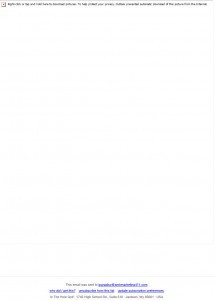 Click on the image if you want to see an enlarged view.
Click on the image if you want to see an enlarged view.
You should strive for a 80:20 balance of text to image but you want to add relevant content to the Alt Text and Stylized Alt Text fields assigned to the image so that text is displayed in cases where the image(s) are not. If the content is your Alt Text fields is effective, users will be more likely to view the image content of your e-mail as well. In this email the images are still not displayed but the core message is there and if I want to save 20% on my next order I might allow my email client to display the images as well.
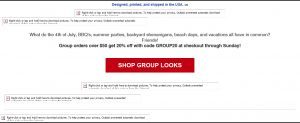 Click on the image if you want to see an enlarged view.
Click on the image if you want to see an enlarged view.
3 Full Width Emails
Email standards were based on the days when screen resolutions were XGA (1024×768) so most emails are designed to be 600px. Today most screens are HD and slowly moving towards 4K which provides a lot more screen real estate for your emails. Many mail clients today display email in full width which allows you to embed creative animated background graphics to stand out from your competition.
4 Don’t Forget Your Branding
The emails you send out for your marketing campaign should be consistent with your brand. Colors, logos, fonts and unique graphics should all be included in your emails to ensure your customers can easily identify you as the sender. You should even consider having the the voice of the email, it’s tone, and the frequency you send out emails be consistent.
5 Consider Using Templates
If you’re not working with a firm that creates and manages your e-mail campaigns (part of the the services we offer) and you’re not creative or certain what to include in your emails you should consider finding a template that works for your business or having one custom designed for you. The templates will reduce the overall cost and development time required to create these types of email and you’ll be more like inclined to send them when you have something to promote.
6 Review the Results and Adjust
I know the article says 5 ways but in reality, the first five would be worthless if we didn’t analyze the results of each campaign. Review how many emails were sent, how many were returned undeliverable, how many were opened and how many people opted out. The overall average open rate for all industries is 18.16%, so that’s your rough target. Open rates vary within each industry so you need to research what the average is for your industry and compare them to your campaigns. If you notice one campaign had a higher open rate than normal try to determine why, what was different about it that caused more people to open it. Make sure you keep track of what works and what doesn’t so you can tailor future campaigns to maximize views.
Email is still a very effective way to communicate with existing customers and attract new ones but your emails have to stand out or they will be doomed to end up in the spam folder. Hopefully by following these five (really six) steps you’ll see improved results.
